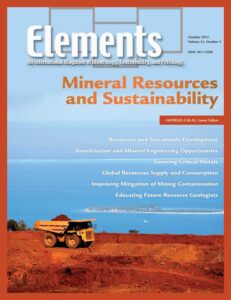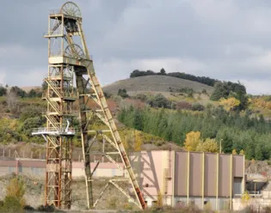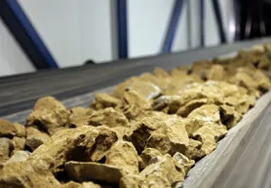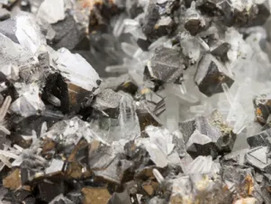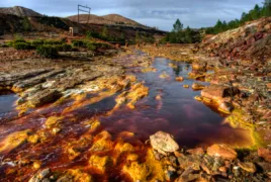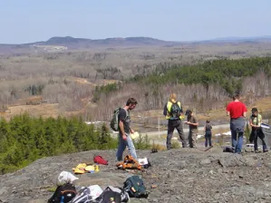Mineral Resources and Sustainability
Georges Calas – Guest Editor
Table of Contents
Mineral resources are a vital part of any economy, modern or ancient. Since the birth of civilization, man has used these resources for pigments, metals, glasses, ceramics, cements and much more. The media has recently suggested there is a crisis looming over finding mineral resources, including critical metals. Centered on the sustainability of mineral resources, themes addressed in this issue include customer–supplier relationships, exploration, recycling and the circular economy, and environmental post-mining impacts. The broad range of topics embraced by this issue – formation of mineral deposits, minerals engineering, and environmental and societal impacts – will provide readers a better understanding of the large-scale economic, historical and educational aspects of mineral resources.
Analab
Australian Scientific Instruments (ASI)
CAMECA
Crystal Maker
Elemental Scientific, Inc.
Excalibur Mineral Corporation
International Mineralogical Association
IsotopX
PANalytical
ProtoXRD
Savillex
Selfrag
Volume 13, Number 6 (December) • Layered Intrusions: Natural Laboratories for Magma Chamber Processes
GUEST EDITORS: Brian O’Driscoll (University of Manchester, UK) and Jill VanTongeren (Rutgers University, USA)
For more than 50 years, layered mafic-ultramafic intrusions have served as natural laboratories for studying magma chamber processes and magmatic differentiation. Further enhancing our understanding of layered intrusion formation will yield valuable insights into the solidification of magmatic systems, the formation of precious metal deposits, and the timescales over which substantial crust-forming episodes occur. The aims of this issue of Elements are to offer an overview of the state-of-the art in the petrology of layered intrusions today and a look forward to the future challenges in the field.
- Layered Intrusions: Dynamic Deposits and Petrological Paradises
Brian O’Driscoll (University of Manchester, UK) and Jill VanTongeren (Rutgers University, USA) - The Skaergaard Intrusion of East Greenland: A Natural Laboratory for Igneous Petrology?
Marian B. Holness (University of Cambridge, UK), Troels FD Nielsen (Geological Survey of Denmark), and Christian Tegner (Aarhus University, Denmark) - Metasomatic Chromitite Seams in the Bushveld and Rum Intrusions
Edmond A. Mathez (American Museum of Natural History, USA) and Rosamond J. Kinzler (American Museum of Natural History, USA) - Plagioclase Zonation as an Archive for Magmatic Processes in Layered Intrusions
Stearns A. Morse (University of Massachusetts Amherst, USA), Jon P. Davidson (Durham University, UK), and Frank J. Tepley III (Oregon State University, USA) - Quantitative Textural Insights into the Construction and Architecture of Layered Intrusions
Michael J. Cheadle (University of Wyoming, USA) and Jeffrey S. Gee (SCRIPPS Institution of Oceanography, USA) - Layered Mafic-Ultramafic Intrusions of Fennoscandia: Mineral Prospectivity in Contrasting Tectonic Settings
Wolfgang D. Maier (Cardiff University, UK) and Eero Hanski (University of Oulu, Finland)
- How Volcanoes Work (February 2017)
- Sulfides (April 2017)
- Rock and Mineral Coatings: Records of Climate Change, Pollution, and Life (June 2017)
- Boron: Light and Lively (August 2017)
- Mineral Resources and Sustainable Development (October 2017)
- Layered Intrusions: Natural Laboratories for Magma Chamber Processes (December 2017)
- Luminescence Dating: Reconstructing Earth’s Recent History (February 2018)
- Comets (April 2018)
- Deep Ocean Mineral Deposits (June 2018)
- Central Andes: Mountains, Magmas and Ore Deposits (August 2018)
- Terroir: Science Related to Grape and Wine Quality (October 2018)
- Marine Biogeochemistry of Trace Elements and Their Isotopes (December 2018)



